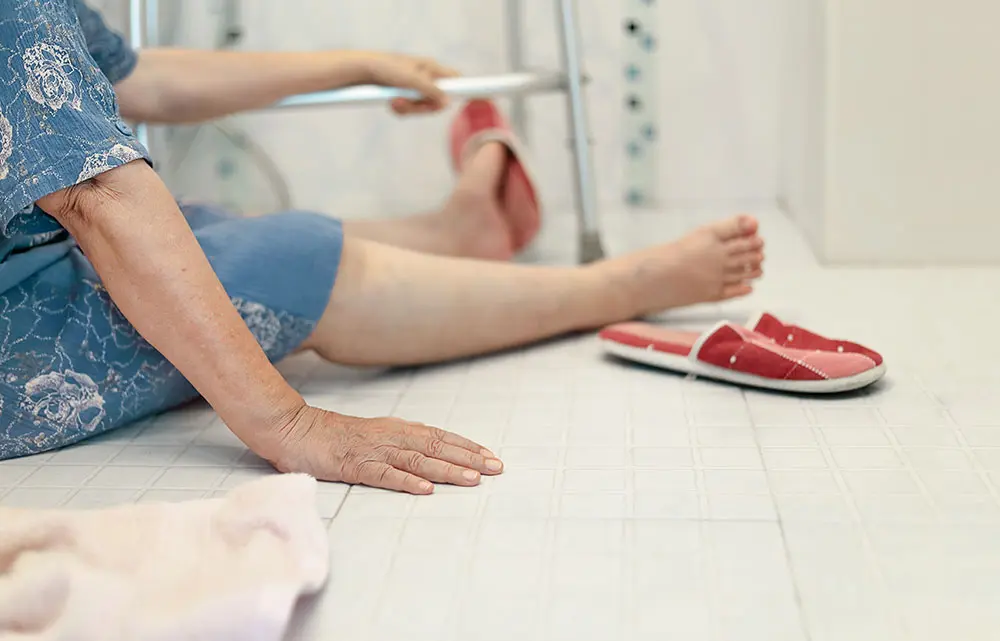
With wet floors, hard surfaces, and tight spaces, the bathroom can be a tough place for anyone to stay safe. This is even more true for older adults and people who have trouble moving. And that’s why bathroom safety is a top priority when caring for a parent or other older adult family member.
The good news is that a few simple solutions can reduce the risk of slips and falls. Here are key approaches to bathroom safety for seniors.
Start with the Experts
Lean on the experts when it comes to safety for seniors. To improve bathroom safety, consult a physical therapist (PT). They can do a home assessment, ensure that your bathroom safety is up to par, and provide tips to improve it if it’s not. Occupational therapists (OTs) can also recommend and order items that will make your aging family member’s bathroom safer.
PTs and OTs take out the guesswork and help you create a plan that includes what you should do first and what can wait. If you and your parent disagree PTs and OTs can also reduce tension by acting as a mutually trusted source of guidance.
No-Cost and Low-Cost Bathroom Safety Fixes
Clear Pathways
Be sure the bathroom doorway and the hallway leading to it are clear of clutter and throw rugs, which can cause trips and falls. In the bathroom, use rubber-backed rugs, which help prevent slipping.
At the bathroom entrance, there may be a small rise between the carpet and the tile (called a saddle). The doorway may also be narrow. Both features can cause problems if not navigated safely. To avoid accidents, consult a PT or OT to work with your loved one on sidestepping and other safe ways of moving around.
In all spaces:
- Make room for devices such as walkers, wheelchairs, and rollators.
- Install nightlights to improve visibility. If no outlets are available, use battery-powered push lights to make sure your parent can find the bathroom easily at night.
Keep in mind that clutter may reappear after it’s been tidied up, and furniture can get moved. Your parent may need to be reminded to keep pathways clear.
If you have questions about improving bathroom safety contact a VNS Health specialist for guidance.
Reduce Slippery Surfaces
Slipping on wet floors is a common cause of falls, especially in the bathroom. Wipe up spills and pools of water as soon as possible.
To prevent falls, use nonslip mats and rugs with rubber backs. You can also use strips or stickers to help secure regular rugs. Just be sure to use enough stickers to cover the entire back of the rug.
Declutter and Organize
Bathrooms are prone to messiness. When the bathroom is cluttered with products, they’re likely to be knocked over. Leaning over to get fallen items, or tripping over them, may lead to injuries.
Keep often-used items within easy reach to limit the need to bend over or reach up high. You may want to use shower caddies or shelves attached the walls by suction cups to store these items for easier access.
Mid-Range and Higher-Cost Bathroom Safety Fixes
Install Grab Bars
If your parent has trouble getting around or balancing, install grab bars in the bathroom. They should go in the shower, just outside the shower, and anywhere else support might be needed, such as near the toilet.
Grab bars are safest if installed by a carpenter or other professional so that the bars are at the right height and angle. A PT can also advise on proper placement.
If you can’t drill into tile, either because your loved one is renting or because it might cause leaks, use a U-shaped grab bar that goes over the tub.
Never use a towel bar as a grab bar. Towel bars are held in place by glue or grout, and they can’t safely hold the weight of a person.
Use Special Equipment
Some seniors might need special equipment to ensure bathroom safety, such as:
- Shower chair or bench
- Retractable or hand-held shower head
- Raised toilet seat (with or without handles)
If your parent or aging family member uses a wheelchair, walker, or rollator, consult with a PT to find safe ways for them to get in and out of the shower. You may need to consider changing step-over shower entries to walk-in entries.
Finally, invest in a help button or medical alert necklace in case your loved one falls.
Making Decisions as a Team
Caring for aging parents often comes with questions about the right approach. It can also lead to tension between you and your parent when changes need to be made. By relying on trusted information and resources, you can make decisions together that keep your parent safe.



